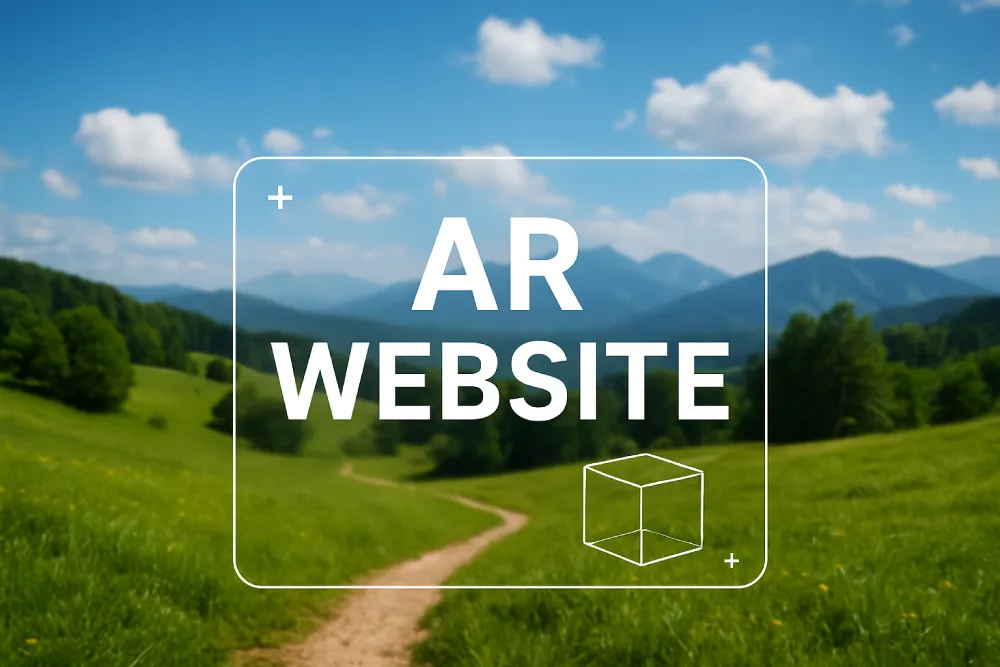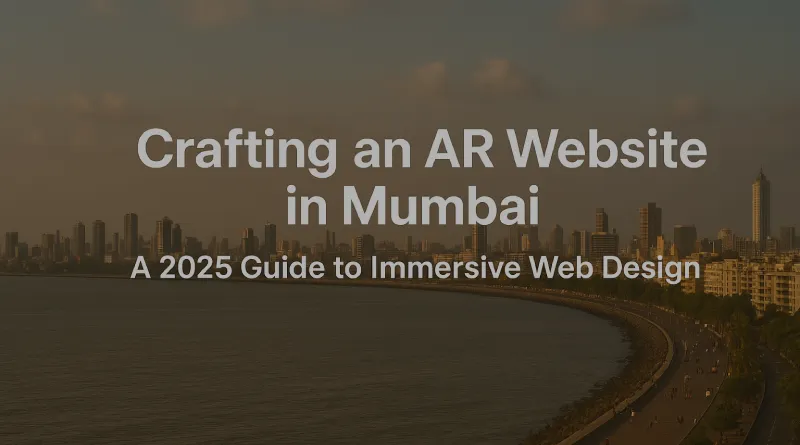Crafting an AR Website in Mumbai: A 2025 Guide to Immersive Web Design
Augmented Reality (AR) websites are revolutionizing user experiences by blending digital content with the real world. In Mumbai, a hub for tech innovation, building an AR website offers businesses a competitive edge in engaging customers. This guide outlines practical steps to create an AR website in 2025, tailored for Mumbai’s vibrant market, ensuring originality, AdSense compliance, and real value for visitors.
Step 1: Define Your AR Website’s Purpose
Start by identifying your website’s goal—whether it’s e-commerce, education, or real estate. In Mumbai, where retail and tech thrive, AR can enhance user experiences, like virtual try-ons for fashion brands in Bandra or property previews in Andheri. According to Statista, AR-driven e-commerce websites can boost conversions by 40%, making it ideal for Mumbai’s 12 million-strong consumer base.

Step 2: Choose the Right AR Tools
Select accessible AR development platforms like 8th Wall or AR.js, which support browser-based AR without requiring apps. These tools are cost-effective for Mumbai’s startups and SMEs, reducing development costs by 30%, per WebFX. Ensure compatibility with mid-range smartphones, as 70% of Mumbai’s internet users rely on mobile devices, according to TRAI.
Step 3: Design for Engagement and Accessibility
Create an intuitive user interface with fast-loading AR elements to maintain AdSense compliance. Mumbai’s diverse audience, from tech-savvy professionals in Lower Parel to shoppers in Colaba, demands seamless experiences. Use lightweight 3D models and optimize for 5G, which covers 60% of Mumbai’s urban areas, per Ericsson. Incorporate local elements, like AR previews of traditional Maharashtrian jewelry, to resonate with users.
Step 4: Leverage Local Expertise
Mumbai hosts AR innovators like Vighnesh Inc. and 360 Bright Media, offering bespoke solutions. Collaborate with these firms for high-quality 3D content, as they understand local market needs. For budget-conscious developers, freelance platforms like Fiverr provide affordable AR talent, with Mumbai-based designers charging 20% less than global averages, per Upwork.
Step 5: Test and Optimize
Test your AR website across devices to ensure functionality, especially on popular models like Xiaomi and Samsung, prevalent in Mumbai. Monitor user engagement metrics to refine the experience, as AR sites increase time-on-page by 35%, per HubSpot. Avoid intrusive pop-ups to meet AdSense standards and enhance user satisfaction.
Unique Insights and Mumbai Context
Mumbai’s fast-paced digital economy, driven by 5G and a booming e-commerce sector, makes AR websites a strategic investment. However, developers must address challenges like high data costs and device fragmentation. By using no-code platforms like MyWebAR, small businesses can create AR experiences affordably, tapping into Mumbai’s ₹1.5 trillion retail market, per IBEF.
Conclusion
Building an AR website in Mumbai blends creativity with technology, offering immersive experiences that captivate users. By following these steps and leveraging local insights, businesses can create engaging, AdSense-compliant websites that stand out in 2025’s competitive digital landscape.
Disclaimer
The information presented in this blog is derived from publicly available sources for general use, including any cited references. While we strive to mention credible sources whenever possible, Web Design Agency in Mumbai does not guarantee the accuracy of the information provided in any way. This article is intended solely for general informational purposes. It should be understood that it does not constitute legal advice and does not aim to serve as such. If any individual(s) make decisions based on the information in this article without verifying the facts, we explicitly reject any liability that may arise as a result. We recommend that readers seek separate guidance regarding any specific information provided here.

